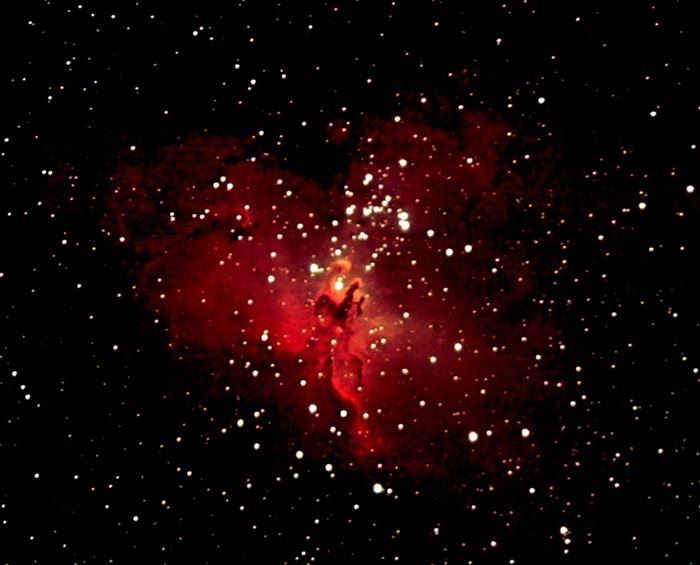
Posted on 05/11/2010 9:57:21 PM PDT by TaraP
The mysterious hole in space seems to have been blasted into the side of a nebula by jets of gas from young stars.
There is a black patch of space in NGC 1999, and for years astronomers have thought it was just a dense cloud of gas and dust, blocking light from passing through. But the Herschel infrared space telescope – which has the ability to peer into these dense clouds — has made an unexpected discovery. This black patch is actually a hole that has been blown in the side of the nebula by the jets and winds of gas from the young stellar objects in this region of space. “No-one has ever seen a hole like this,” said Tom Megeath, of the University of Toledo in the USA. “It’s as surprising as knowing you have worms tunneling under your lawn, but finding one morning that they have created a huge, yawning pit.” Any previous descriptions of NCG 1999 said that the ominous dark cloud in the center was actually a condensation of cold molecular gas and dust so thick and dense that it blocks light. And astronomers had no reason to believe otherwise, until Herschel's powerful infrared eyes took a look from space.
(Excerpt) Read more at csmonitor.com ...
Thanks...I was really please with that shot.
Appreciate that. It's one of the best nebula I've shot and when I fist saw the raw data, I was very pleased.
I saw a show this week about the Hubble drivers pointing the telescope at a “dark place†in space. They left it there for 8 days and when they looked they found 1,000 new galaxies that were just dim and very far away.

THX THX.
Well I guess its all relative then /rim shot ;)
bttt

For some reason, DS 9 is not visible in the shot.
posted this from Chandra last night.. on a WHIM ;-)
H2356-309: X-ray Discovery Points to Location of Missing Matter (Chandra finds WHIM)
http://www.freerepublic.com/focus/f-chat/2511666/posts
BFL
 |
||
| · join · view topics · view or post blog · bookmark · post new topic · subscribe · | ||
| Google news searches: exoplanet · exosolar · extrasolar · | ||
M16 otherwise known as the Eagle Nebula is about 7,000 light years distance from earth.

The Hubble Space Telescope obtained the famous photograph of this nebula, known as the "Pillars of Creation." You probably have seen it.
The dark tower of gas coming off the nebula, at center, is approximately 57 trillion miles high. This is not quite Hubble quality here, but the dark pillars can clearly be seen at the center of the image above.
Here below I enlarged the central region of the nebula where the "pillars of creation" that were made famous by the Hubble images.

This image was obtained with a Canon 40D, Astronomk LP filters, 6.3 focal reducer riding on a 10"SC telescope--45 images were shot RAW at 2.5 min exposures, then combined, calibrated and stacked using DSS.
Thanks for sharing and the ping back. Mighty big fire crackers out there.
This will help explain the colors. An excellent read to answer your question.
http://www.astropix.com/HTML/I_ASTROP/COLOR.HTM
BTW, thanks!

Looks like the lips of smoke blowing an air ring
Disclaimer: Opinions posted on Free Republic are those of the individual posters and do not necessarily represent the opinion of Free Republic or its management. All materials posted herein are protected by copyright law and the exemption for fair use of copyrighted works.